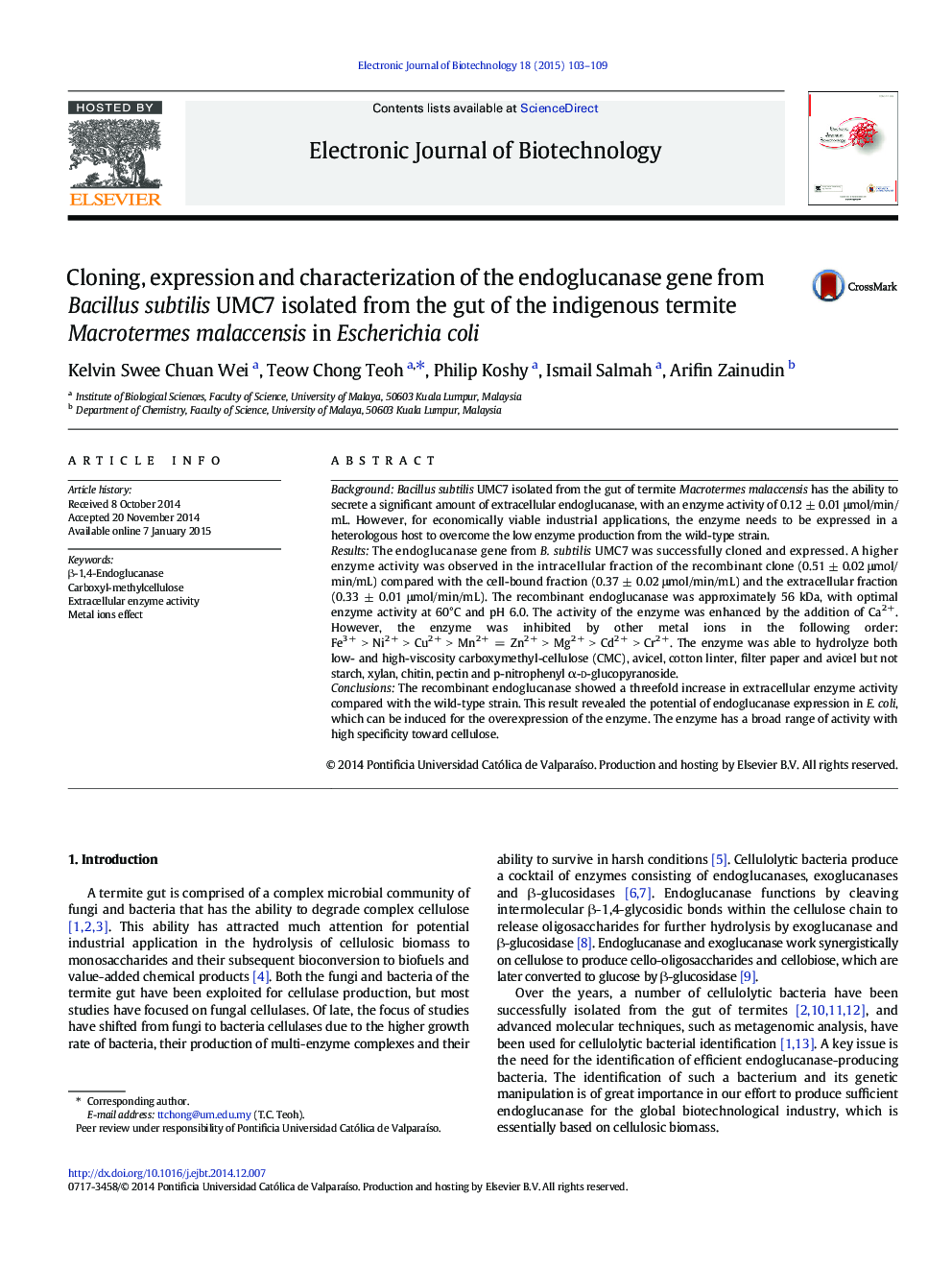| Article ID | Journal | Published Year | Pages | File Type |
|---|---|---|---|---|
| 200554 | Electronic Journal of Biotechnology | 2015 | 7 Pages |
BackgroundBacillus subtilis UMC7 isolated from the gut of termite Macrotermes malaccensis has the ability to secrete a significant amount of extracellular endoglucanase, with an enzyme activity of 0.12 ± 0.01 μmol/min/mL. However, for economically viable industrial applications, the enzyme needs to be expressed in a heterologous host to overcome the low enzyme production from the wild-type strain.ResultsThe endoglucanase gene from B. subtilis UMC7 was successfully cloned and expressed. A higher enzyme activity was observed in the intracellular fraction of the recombinant clone (0.51 ± 0.02 μmol/min/mL) compared with the cell-bound fraction (0.37 ± 0.02 μmol/min/mL) and the extracellular fraction (0.33 ± 0.01 μmol/min/mL). The recombinant endoglucanase was approximately 56 kDa, with optimal enzyme activity at 60°C and pH 6.0. The activity of the enzyme was enhanced by the addition of Ca2 +. However, the enzyme was inhibited by other metal ions in the following order: Fe3 + > Ni2 + > Cu2 + > Mn2 + = Zn2 + > Mg2 + > Cd2 + > Cr2 +. The enzyme was able to hydrolyze both low- and high-viscosity carboxymethyl-cellulose (CMC), avicel, cotton linter, filter paper and avicel but not starch, xylan, chitin, pectin and p-nitrophenyl α-d-glucopyranoside.ConclusionsThe recombinant endoglucanase showed a threefold increase in extracellular enzyme activity compared with the wild-type strain. This result revealed the potential of endoglucanase expression in E. coli, which can be induced for the overexpression of the enzyme. The enzyme has a broad range of activity with high specificity toward cellulose.
